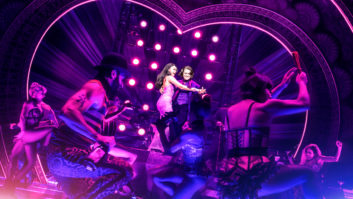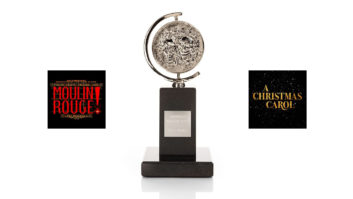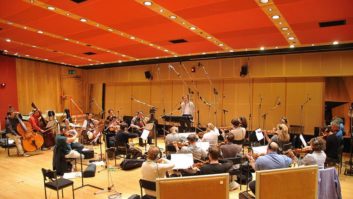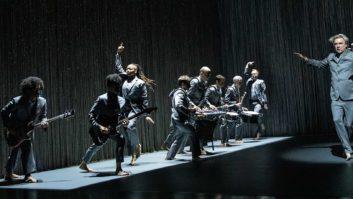When you arrive at New York City’s Al Hirschfeld Theatre for a performance of Moulin Rouge! The Musical, you are dazzled by the set design before you even reach your seat. The entire interior of the Broadway theater has been turned into a fictionalized version of Paris’ Moulin Rouge; to the left of the stage sits a large red spinning windmill; to the right, a sizeable blue elephant stands next to a brass cage where performers will dance. The stage itself has “Moulin Rouge” spelled out in deep red neon floating before a series of heart-shaped openings that shrink in size as they retreat toward the back of the theater.
However, for all the striking visuals, this show is really about the music. Like the 2001 Baz Luhrmann film it is based on, Moulin Rouge! The Musical tells the story of an ill-fated romance through very familiar pop music, but to call this a jukebox musical would be a gross simplification, as music supervisor Justin Levine pulls from the ridiculously vast catalog of pop tunes and cleverly arranges them so they not only entertain, but drive the story forward and elicit audience reactions from laughter to tears.
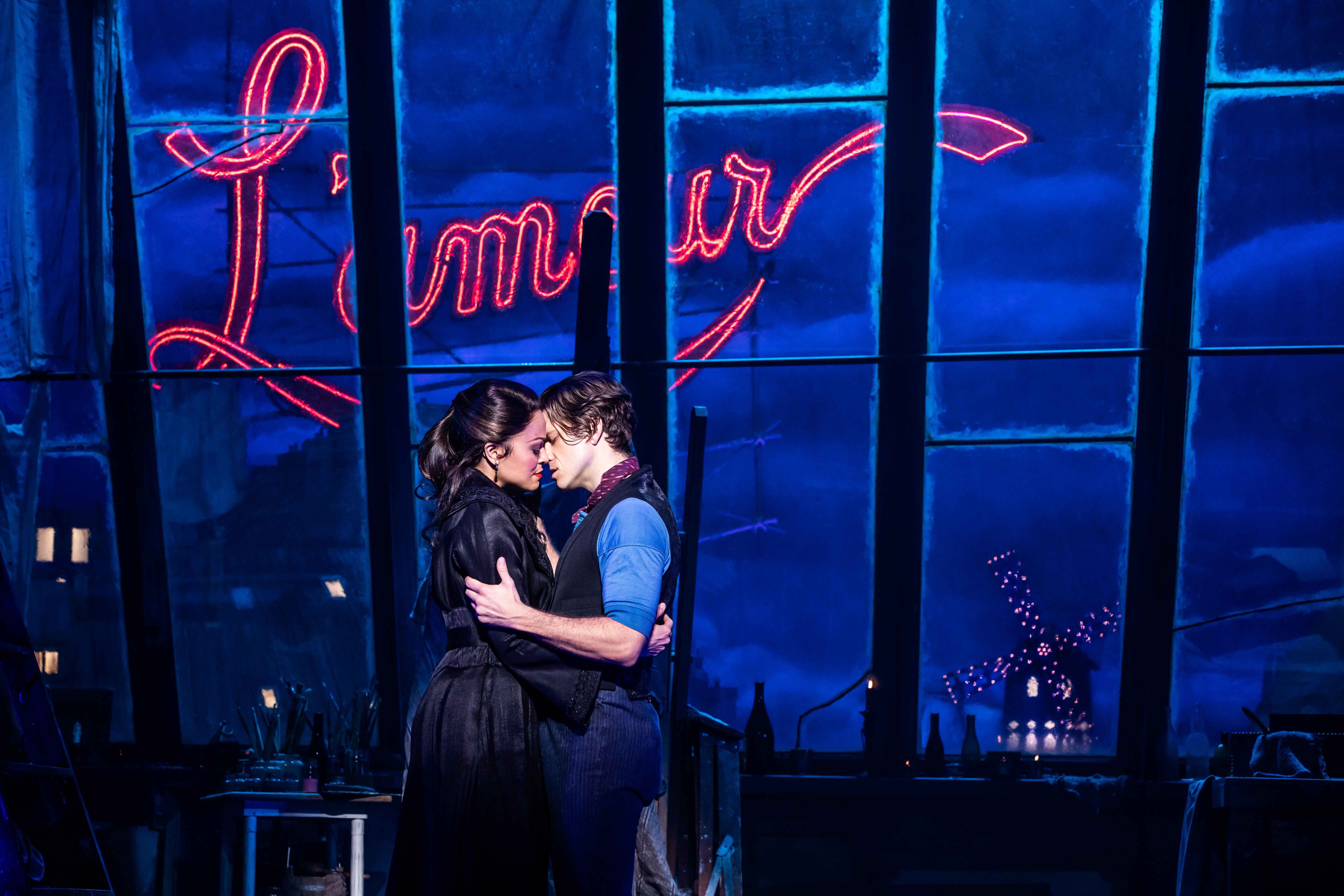
The show’s creative team knew the legion of fans who loved the film would have certain expectations from the show, but they did not let that drive the project. “I don’t think there was a strong sense that we had to do anything,” says Levine. “I think we just wanted it to be essential, and we knew that there were going to be certain expectations from some of the fan base, but I wanted to treat this like we were building a new piece and not feel like we were shoehorning anything into it. We outlined the show the first week that I spent with John [Logan, book] and Alex [Timbers, director], and then we had at least 50 percent of the songs that were in the movie included. But the movie uses a lot less than we’re using because there’re just so many more added songs. I think the movie probably had about 30 songs quoted, and we have over 70 songs.”
The show paints with a wide swath of pop music history, with songs representing the ’50s through to contemporary hits. With such a deep palette, how do you choose which colors to use?

“The focus in my searches were lyrics,” says Levine. “It became a puzzle for me to figure out musically. ‘How am I going to approach this to serve the story?’ The characters have to sing lyrics that could come out of their mouth. For example, in the moment at the end of Act One, ‘The Elephant Love Medley,’ there’re 20 love songs and anti-love songs being thrown back and forth. The order of that and the way it is structured is completely built on the scene. The dialog was the key. I started there, and then, once I had a scene that made sense to me, I had to go in and solve the musical puzzle.
“I also wanted there to be variety of choice from the catalog. I wanted more soul music; I wanted more jazz; I wanted more rock ‘n’ roll. I didn’t want to leave anyone behind. It’s fun to watch the audience during the show because you can kind of see what is recognizable to them. The Rolling Stones musical medley is the moment that usually scoops them up and brings them along.”
Working Both Worlds
Matt Stine was brought in as the show’s music producer to aid in the editing and producing of the live tracks. Stine had worked as music producer with Timbers on another recent Broadway hit, Beetlejuice—sometimes overlapping with the Moulin Rouge! work—and had managed a band that Levine was in, in addition to other show collaborations with both of them such as Here Lies Love.

“Music producer is a relatively new concept for Broadway,” says Stine. “I act as a bridge between the music departments and the sound departments because I have the technical know-how of a sound designer, but I work very much from within the music department. It’s almost like being a music designer in the sense that I’m getting into the nitty gritty of building arrangements with Justin; creating some of the prerecorded track material that the band would play to, but then I’m also stepping back and getting behind the console with the sound designer and working with them on how it should sound.
“I think what’s happened over the years is that there’s this expectation that these musicals need to sound like records. So it’s a good opportunity for me because I can get in there and try and help both the sound and music departments achieve that.
“It’s similar to when you go into the studio to produce a record and you’re working with an engineer on the one hand and you’re working with the band on the other, and you’re trying to put the two worlds together to achieve the sonic vision of the record.”
The Moulin Rouge! theater setup includes two Avid S6L consoles; one of which is used by the show’s mixer to control all the live microphones and one fader each for the band and the prerecorded track material. The second console handles all the inputs from the band in addition to the 32 channels coming from Ableton. The full band mix lives in this console—all the drum mics, the electric and acoustic bass, the guitars, the keyboards, strings, brass and so on.
“What I did frequently was stay on the secondary Avid console and, as we’re working through numbers, I’d adjust levels and look at fader moves for individual moments of the song that adjust internal balances between the band versus the track material,” says Stine. “All that material gets sent from that console into that ‘BAND’ fader that the mixer is operating in the show, and we’re storing scenes—sometimes multiple scenes—within the song to try and create the kind of sonic shift that you can create when you’re making a record, but it is unusual to have that kind of flexibility when you’re mixing a live musical.
“Thankfully, we have an incredible sound designer in Peter Hylenski, who is just game to go farther, and a fantastic mixer in David “Digz” Dignazio. David is in charge of all the live mics that are on stage, and that has to be 100 percent his focus, so Peter and I do everything we can to make the mix we send to him dynamic so Digz doesn’t have to ride that BAND fader too much.”
Related: Broadway In A Studio: Cast Album Recording For Falsettos, She Loves Me
From Stage to Studio
With the release of the cast album, co-produced by Levine, Stine, Timbers and Luhrmann himself, the nuances of the performances and arrangements can truly be appreciated—including grasping those brief bits of tunes that were recognizable but quickly moved on to the next song before the brain could identify it.
Unsurprisingly with this group, the production of the cast album was going to be more than a re-creation of what is being done on stage each night—especially with the addition of Luhrmann to the production team.
“One of the things that Baz, Matt, Alex and I have discussed is that we wanted to represent the show, but also make the album a listening experience,” says Levine. “One of the things I love about a cast album is that, because you’re not also taking in the other elements, you can really listen to the orchestrations and arrangements in a way that you might not in the live experience. The goal was to start from the place of capturing the show and then doing whatever we could to highlight the things that you otherwise might not experience.”
“Baz was hugely helpful in motivating the performers and in giving them license to mess it up,” adds Stine. “He got them to let loose and see what happens. It was fun for everybody to have him around.”
The performers were not the only ones Luhrmann was able to motivate. “He actually convinced the label to pay for an additional 22 string players in addition to our 14-piece show band!” says Stine.
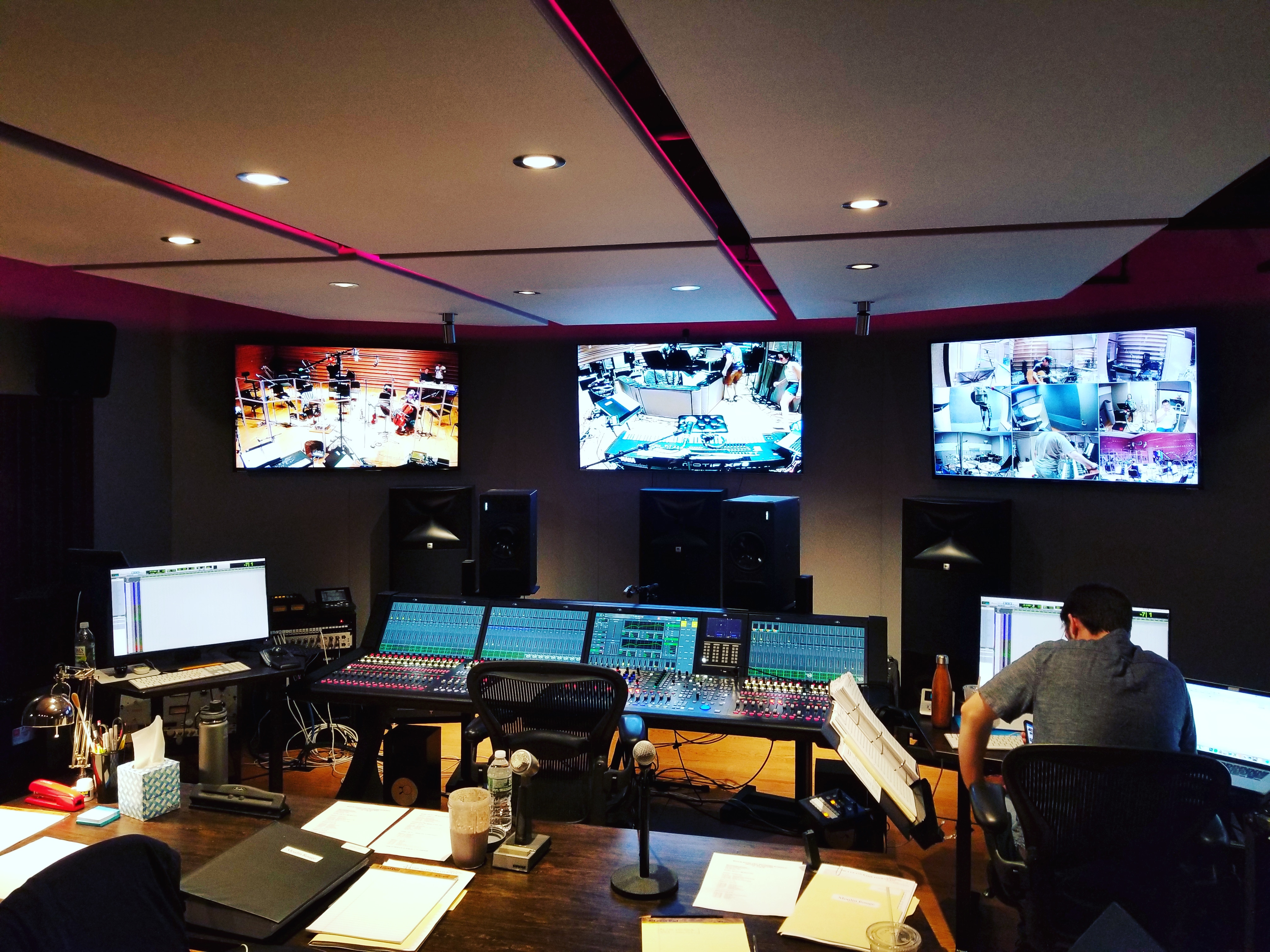
The cast album was recorded at DiMenna Center for Classical Music in the typically condensed recording process that these kinds of albums demand—after all, the artists all have day jobs performing the songs that are being captured. The band was recorded in a day and a half, and there was an additional half day of recording strings (thanks to Luhrmann). The cast was recorded in one very long day, with the ensemble coming in first and then the principal cast, and then the following half-day for the two leads—Aaron Tveit as Christian and Karen Olivio as Satine.
“The rooms at DiMenna are fantastic,” says Stine. “Their smaller room, which is really quite large, is where we recorded this album, with the setup for the band and the vocal days obviously being different.
“One of the guys who runs DiMenna, Lawrence Manchester, lent us his three Neumann M50s, which are incredible microphones that we used in a Decca tree for the large string section. We also relied pretty heavily on a bunch of Sennheiser MKH800s, which are fantastic microphones and DiMenna has a large number of them.
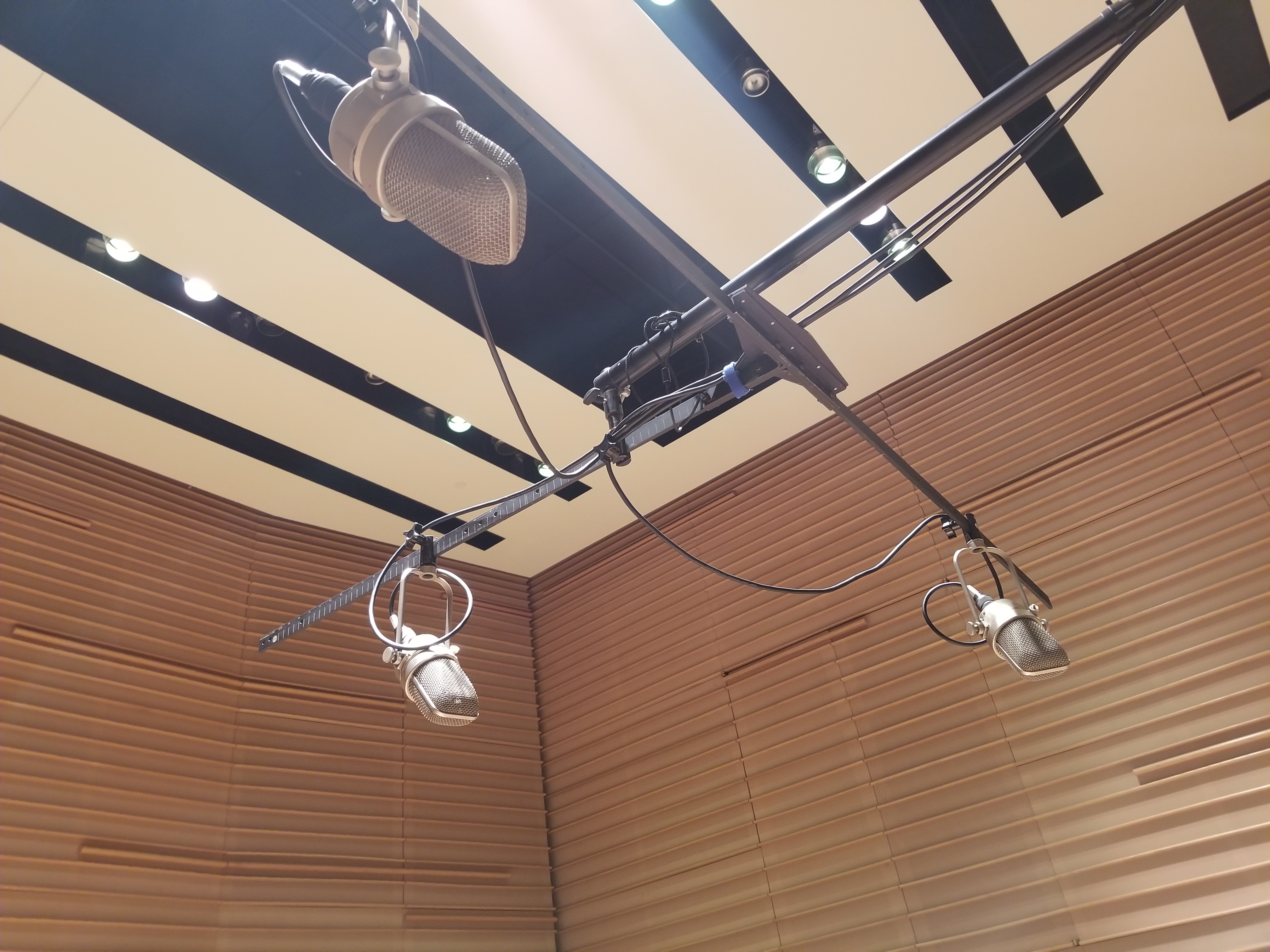
“Jared Schonig is an absolutely incredible drummer, but we did want to keep him separate so he could just bash away. We also decided to keep our four horn players in a separate isolated room, as well, which is actually similar to how we have it set up at the theater. That enabled us to record the rest of the rhythm section in the room with the string players at the same time without too much concern for bleed.”
To record the guitars, Stine transferred another technique from the live show—using Palmer impedance load boxes with guitars instead of miking amps. “Peter Hylenski introduced me to the Palmers, and it seems more Broadway pits are using them,” says Stine. “Basically it’s everything that a speaker is without the actual speaker itself. We’d still use tube heads—we had a Fender Super Sonic 22 head that would just plug right into the Palmer, and then go right into the board. There’s not much to it—you just plug it in and it sounds great.”
When it comes to vocals, planning is key, according to Stine. “The trick to a good vocal recording for a Broadway cast album is to just set up the room so that you’re flexible and able to do whatever you need to do quickly,” he says. “We’ll bring all the ensemble members in and pair them up in front of a semicircle of microphones—just out in the room; no baffling or anything. We’ll get a pair of room mics up and the actors will get shoulder to shoulder around a close mic. I think we did about six hours straight with the ensemble.
“DiMenna doesn’t have actual vocal booths, but is very flexible, so engineers Isaiah Abolin and Derik Lee built six booths on the opposite side of the room from the semi-circle of ensemble mics for us to put the principal cast members and soloists in. We have a couple numbers where all six of them would be singing at the same time, so it’s important that—for Broadway performers that are not necessarily experienced in recording studios—they have good eye contact with each other so they can play off each other and still be in front of the microphone.”
To accomplish that, DiMenna’s baffles had windows on the front and sides where the performers could see one another. As for the lead vocals, “Peter Hylenski owns one of the best U 47s in New York; it’s a classic,” says Stine. “We were fortunate enough to borrow that for some of the lead vocals.”

Creative Collaborators
Both the show and the cast album required an extraordinary amount of creative collaboration, the key to which, according to Levine, is trust. “You have to be able to trust the people you work with enough that you don’t mind looking foolish in front of them,” he says. “In other words, you need collaborators that encourage you to step out and be yourself. There were times where we went down very long roads only to find that it was the wrong path, and it’s important that we supported each other in those choices, because otherwise we would have just made it an exact replica of the film on stage, which I don’t think anybody wanted.”
The cast album is now available through RCA Records/House of Iona and on all streaming music services, so you can hear the clever combinations and uses of famous pop tunes for yourself. Although if you can see the show before listening to the cast album, do it—part of the joy in seeing the show is discovering the songs used; like a favorite playlist on shuffle, you don’t know what’s next, just that it will be familiar.
Related: ‘Jagged Little Pill’ Takes the Stage
